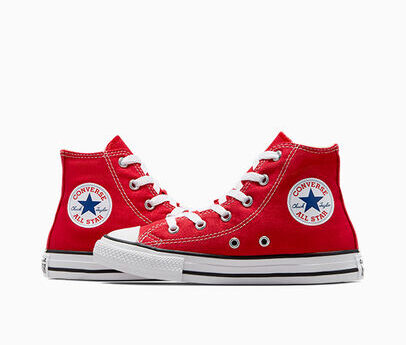Table of Contents
Introduction
In the dynamic realm of sports and athletic apparel, few names resonate as profoundly as Nike. Established in 1964 by the visionary duo of Bill Bowerman and Phil Knight, Nike has ascended to unparalleled heights, becoming an undisputed titan in the industry. Renowned for its innovative designs, cutting-edge technologies, and unwavering commitment to athletic excellence, Nike has become synonymous with success on and off the field. This introduction sets the stage for a captivating exploration of the brand’s journey from its humble beginnings to its current status as a global icon.
At the heart of Nike’s identity is its iconic logo — the Swoosh. Simple yet powerful, the Swoosh has become a universal symbol of athleticism and aspiration. Designed by graphic design student Carolyn Davidson in 1971, the Swoosh encapsulates the brand’s ethos of movement, speed, and triumph. The logo’s timeless appeal has contributed significantly to Nike’s visual identity, making it instantly recognizable across the globe. Complementing the Swoosh is Nike’s celebrated tagline, “Just Do It.” Introduced in 1988, this succinct yet impactful phrase has transcended its marketing origins to become a mantra for individuals pursuing excellence in various aspects of life. The combination of the Swoosh and “Just Do It” has not only fueled Nike’s success but has also left an indelible mark on popular culture.
As we delve into the depths of Nike’s prominence, it is essential to recognize the brand’s transformative influence on the sports and athletic industry. Nike has not merely provided athletes with superior performance gear but has also cultivated a lifestyle that extends far beyond the sports arena. From professional athletes to weekend warriors, the allure of donning the iconic Swoosh has become a symbol of personal empowerment and dedication. Nike’s commitment to pushing boundaries and redefining athletic wear has revolutionized the way we perceive sports apparel, making it a dynamic and integral part of contemporary fashion and culture.
In essence, this introduction lays the foundation for a comprehensive exploration of Nike’s impact on the sports and athletic industry. From its humble beginnings to its global dominance, Nike’s journey is a testament to innovation, resilience, and a relentless pursuit of excellence. As we embark on this journey through the annals of Nike’s history, we will uncover the brand’s defining moments, groundbreaking innovations, and enduring influence on the world of sports and beyond.
Founding and Early Years
Background on Nike’s founding by Bill Bowerman and Phil Knight in 1964:
Nike’s origins trace back to the partnership forged between renowned track coach Bill Bowerman and business student Phil Knight in 1964. Initially named Blue Ribbon Sports, the company began as a distributor for the Japanese shoemaker Onitsuka Tiger, laying the groundwork for what would become a global athletic empire.
Evolution from Blue Ribbon Sports to Nike:
The transformative moment came in 1971 when the founders rebranded the company as Nike, inspired by the Greek winged goddess of victory. This pivotal shift marked the commencement of a brand that would transcend athletic boundaries and redefine the sports industry’s landscape.
Early challenges and successes:
In the nascent stages, Nike faced hurdles common to startups, navigating financial constraints and market competition. However, early successes, fueled by innovative designs and strategic partnerships, propelled the company forward, setting the stage for its meteoric rise.
The Swoosh Era (1971-1980)
Introduction of the iconic Nike Swoosh logo:
The 1970s witnessed the birth of Nike’s visual identity with the introduction of the Swoosh logo. Designed by Carolyn Davidson in 1971, the Swoosh quickly became an emblem of athleticism, capturing the essence of movement and speed.
Key marketing strategies that contributed to the brand’s recognition:
During this period, Nike implemented groundbreaking marketing strategies that played a pivotal role in establishing its global recognition. The emphasis on innovation, performance, and aspirational messaging resonated with consumers, propelling Nike to the forefront of the athletic industry.
Milestones during this period, such as the first official Nike store:
The late 1970s saw the opening of Nike’s first official store, a significant milestone reflecting the brand’s commitment to direct engagement with consumers. This move laid the foundation for Nike’s retail dominance and set the stage for its expansive network of stores worldwide.
Innovation and Endorsements
Exploration of Nike’s commitment to innovation in athletic footwear and apparel:
Nike’s commitment to pushing the boundaries of athletic wear is evident in its relentless pursuit of innovation. From groundbreaking cushioning technologies like Air Max to revolutionary knit fabrics like Flyknit, Nike has consistently redefined the industry’s standards.
Breakthrough technologies introduced, like Air Max and Flyknit:
The introduction of Air Max in the late 1980s revolutionized sneaker design, showcasing visible air cushioning. Subsequent innovations, such as Flyknit’s seamless and sustainable knit construction, further solidified Nike’s reputation as a pioneer in performance footwear.
Discussion of famous athlete endorsements and their impact on the brand:
Nike’s association with legendary athletes, from Michael Jordan to LeBron James, has played a pivotal role in shaping the brand’s image. These endorsements not only elevated athlete branding but also contributed significantly to Nike’s market dominance and cultural influence.
Just Do It” Campaign (1988)
In-depth analysis of the “Just Do It” campaign and its cultural significance:
The introduction of the “Just Do It” campaign in 1988 marked a cultural shift in marketing. Its motivational ethos resonated beyond sports, inspiring individuals to pursue excellence in all aspects of life. An in-depth analysis explores the campaign’s enduring impact on popular culture.
Impact on consumer perception and sales:
“Just Do It” became more than a tagline; it became a philosophy. This section delves into how the campaign not only transformed consumer perception of the brand but also contributed to a substantial increase in sales, solidifying Nike’s position as an aspirational lifestyle brand.
Notable advertisements and collaborations during this period:
Highlighting specific advertisements and collaborations from this era provides insight into the creative strategies employed by Nike. Collaborations with filmmakers, artists, and athletes contributed to the brand’s cultural relevance and continued success.
Challenges and Controversies
Examination of challenges faced by Nike, including labor controversies:
This section scrutinizes challenges, including controversies surrounding labor practices in overseas manufacturing. It explores the impact on Nike’s reputation and the steps taken by the company to address and rectify these issues.
Steps taken by the company to address and overcome these challenges:
Nike’s response to challenges, including increased transparency, supplier accountability, and improved labor conditions, showcases the brand’s commitment to corporate responsibility. Examining the evolution of these practices demonstrates Nike’s dedication to ethical standards.
The evolution of corporate responsibility at Nike:
The journey from controversy to corporate responsibility provides insights into how Nike transformed its business practices. This evolution reflects a broader trend in the corporate world toward increased social responsibility and ethical considerations.
Global Expansion
Overview of Nike’s expansion into international markets:
As Nike transitioned from a domestic player to a global powerhouse, this section provides an overview of the brand’s strategic moves into international markets. It discusses the challenges and triumphs faced while adapting to diverse cultures and market landscapes.
Exploration of key strategies employed in global marketing:
Examining Nike’s global marketing strategies reveals the brand’s adaptability and understanding of diverse consumer needs. From region-specific campaigns to cultural collaborations, Nike’s global approach has been instrumental in its worldwide success.
Examples of successful international campaigns:
Highlighting specific international campaigns that resonated with diverse audiences sheds light on Nike’s ability to connect with consumers on a global scale. Case studies demonstrate the effectiveness of tailoring marketing efforts to regional nuances.
Sustainability Initiatives
Discussion of Nike’s commitment to sustainability in recent years:
A contemporary perspective on Nike explores the brand’s commitment to sustainability. This section delves into initiatives aimed at reducing environmental impact, including the use of eco-friendly materials and sustainable manufacturing practices.
Overview of eco-friendly materials and manufacturing processes:
Nike’s adoption of eco-friendly materials, recycled fabrics, and sustainable manufacturing processes is examined in detail. An exploration of how these initiatives align with broader environmental concerns provides context for the brand’s eco-conscious efforts.
Evaluation of the impact on the brand’s image and market position:
Assessing how sustainability initiatives influence consumer perceptions and impact Nike’s market position reveals the growing importance of eco-consciousness in the modern consumer landscape. This evaluation considers the brand’s role in promoting sustainable practices within the industry.
Nike’s Impact on Sports Culture
Exploration of Nike’s influence on sports fashion and culture:
Analyzing Nike’s role in shaping sports fashion and culture provides insights into the brand’s cultural impact. From iconic designs to collaborations with designers, this section explores how Nike has transcended sportswear to become a cultural phenomenon.
Analysis of collaborations with designers and celebrities:
Examining collaborations with prominent designers and celebrities illustrates Nike’s ability to bridge the gap between sports and fashion. These partnerships have not only elevated the brand’s aesthetic appeal but also contributed to its status as a trendsetter.
The role of limited-edition releases in shaping sneaker culture:
The phenomenon of limited-edition sneaker releases has become synonymous with Nike. This section explores how these exclusive drops have fueled a thriving sneaker culture, turning releases into highly anticipated events and contributing to the brand’s cultural relevance.
Future Outlook
Speculation on the future direction of Nike:
Anticipating the trajectory of Nike’s future involves considering industry trends, technological advancements, and consumer preferences. This section offers speculative insights into potential innovations, market strategies, and the brand’s evolving role in the global landscape.





